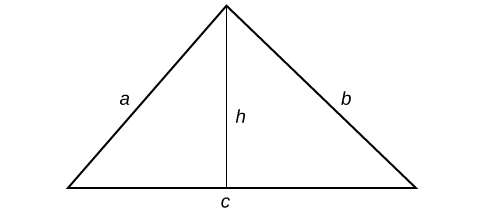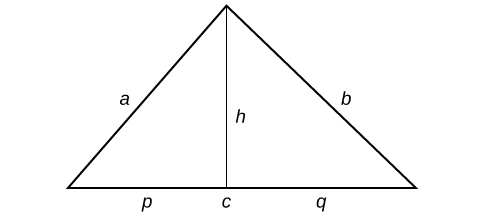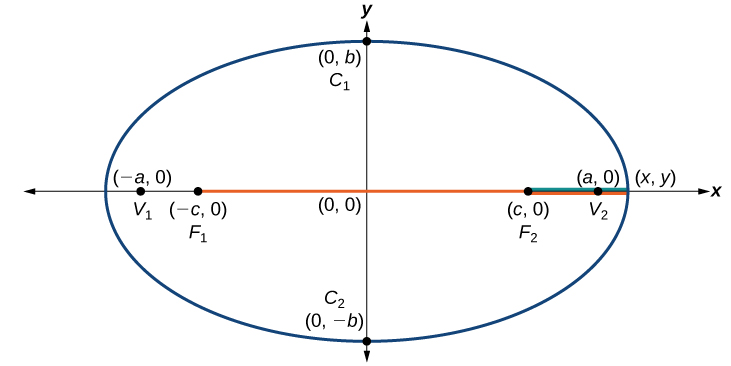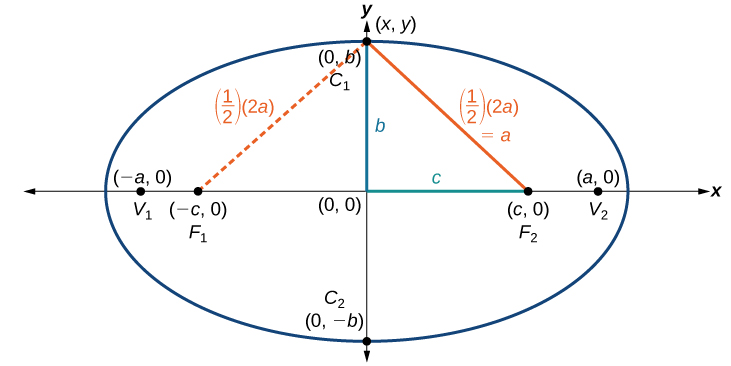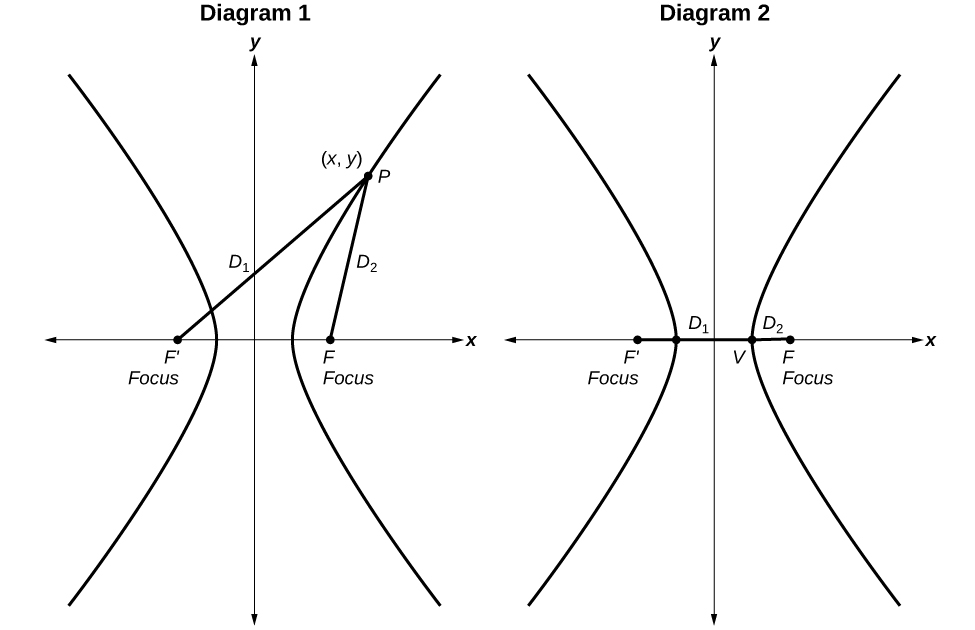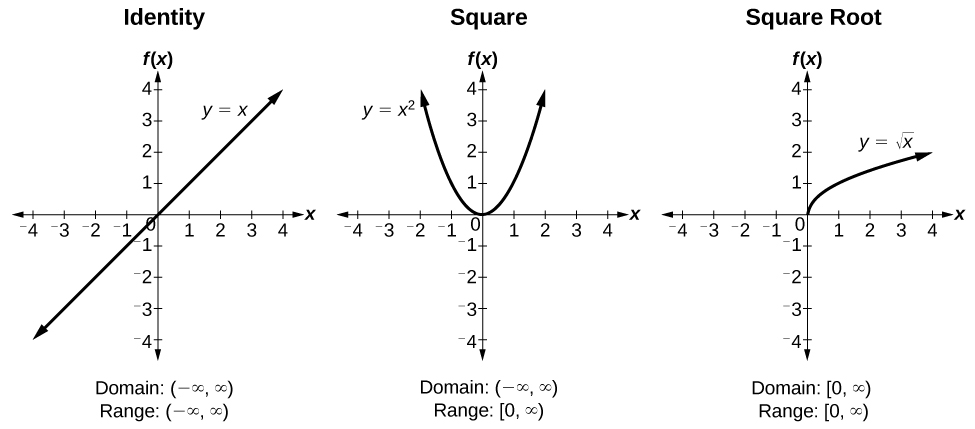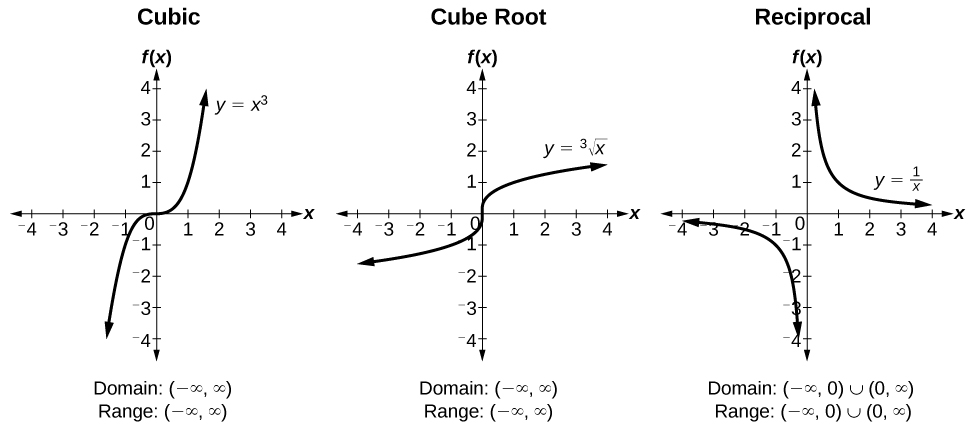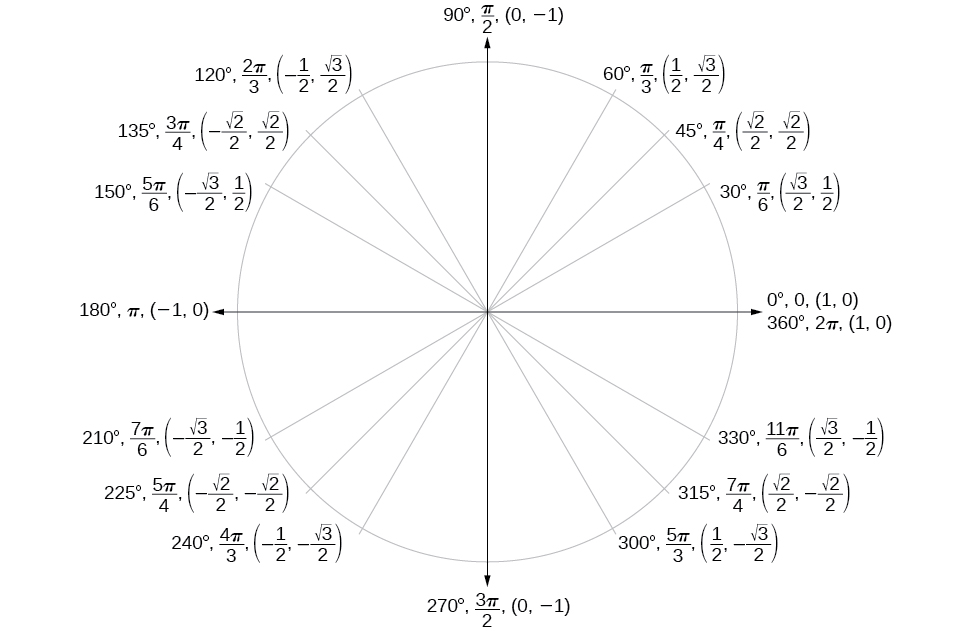Appendix
Important proofs and derivations
Product Rule
log
a
x
y
=
log
a
x
+
log
a
y
Proof:
Let
m
=
log
a
x
and
n
=
log
a
y
.
Write in exponent form.
x
=
a
m
and
y
=
a
n
.
Multiply.
x
y
=
a
m
a
n
=
a
m
+
n
a
m
+
n
=
x
y
log
a
(
x
y
)
=
m
+
n
=
log
a
x
+
log
b
y
Change of Base Rule
log
a
b
=
log
c
b
log
c
a
log
a
b
=
1
log
b
a
where
x
and
y
are positive, and
a
>
0
,
a
≠
1.
Proof:
Let
x
=
log
a
b
.
Write in exponent form.
a
x
=
b
Take the
log
c
of both sides.
log
c
a
x
=
log
c
b
x
log
c
a
=
log
c
b
x
=
log
c
b
log
c
a
log
a
b
=
log
c
b
log
a
b
When
c
=
b
,
log
a
b
=
log
b
b
log
b
a
=
1
log
b
a
Heron’s Formula
A
=
s
(
s
−
a
)
(
s
−
b
)
(
s
−
c
)
where
s
=
a
+
b
+
c
2
Proof:
Let
a
,
b
, and
c
be the sides of a triangle, and
h
be the height.
So
s
=
a
+
b
+
c
2 .
We can further name the parts of the base in each triangle established by the height such that
p
+
q
=
c
.
Using the Pythagorean Theorem,
h
2
+
p
2
=
a
2
and
h
2
+
q
2
=
b
2
.
Since
q
=
c
−
p
, then
q
2
=
(
c
−
p
)
2
.
Expanding, we find that
q
2
=
c
2
−
2
c
p
+
p
2
.
We can then add
h
2
to each side of the equation to get
h
2
+
q
2
=
h
2
+
c
2
−
2
c
p
+
p
2
.
Substitute this result into the equation
h
2
+
q
2
=
b
2
yields
b
2
=
h
2
+
c
2
−
2
c
p
+
p
2
.
Then replacing
h
2
+
p
2
with
a
2
gives
b
2
=
a
2
−
2
c
p
+
c
2
.
Solve for
p
to get
p
=
a
2
+
b
2
−
c
2
2
c
Since
h
2
=
a
2
−
p
2
, we get an expression in terms of
a
,
b
, and
c
.
h
2
=
a
2
−
p
2
=
(
a
+
p
)
(
a
−
p
)
=
[
a
+
(
a
2
+
c
2
−
b
2
)
2
c
]
[
a
−
(
a
2
+
c
2
−
b
2
)
2
c
]
=
(
2
a
c
+
a
2
+
c
2
−
b
2
)
(
2
a
c
−
a
2
−
c
2
+
b
2
)
4
c
2
=
(
(
a
+
c
)
2
−
b
2
)
(
b
2
−
(
a
−
c
)
2
)
4
c
2
=
(
a
+
b
+
c
)
(
a
+
c
−
b
)
(
b
+
a
−
c
)
(
b
−
a
+
c
)
4
c
2
=
(
a
+
b
+
c
)
(
−
a
+
b
+
c
)
(
a
−
b
+
c
)
(
a
+
b
−
c
)
4
c
2
=
2
s
⋅
(
2
s
−
a
)
⋅
(
2
s
−
b
)
(
2
s
−
c
)
4
c
2
Therefore,
h
2
=
4
s
(
s
−
a
)
(
s
−
b
)
(
s
−
c
)
c
2
h
=
2
s
(
s
−
a
)
(
s
−
b
)
(
s
−
c
)
c
And since
A
=
1
2
c
h
, then
A
=
1
2
c
2
s
(
s
−
a
)
(
s
−
b
)
(
s
−
c
)
c
=
s
(
s
−
a
)
(
s
−
b
)
(
s
−
c
)
Properties of the Dot Product
u
·
v
=
v
·
u
Proof:
u
·
v
=
⟨
u
1
,
u
2
,
...
u
n
⟩
·
⟨
v
1
,
v
2
,
...
v
n
⟩
=
u
1
v
1
+
u
2
v
2
+
...
+
u
n
v
n
=
v
1
u
1
+
v
2
u
2
+
...
+
v
n
v
n
=
⟨
v
1
,
v
2
,
...
v
n
⟩
·
⟨
u
1
,
u
2
,
...
u
n
⟩
=
v
·
u
u
·
(
v
+
w
)
=
u
·
v
+
u
·
w
Proof:
u
·
(
v
+
w
)
=
⟨
u
1
,
u
2
,
...
u
n
⟩
·
(
⟨
v
1
,
v
2
,
...
v
n
⟩
+
⟨
w
1
,
w
2
,
...
w
n
⟩
)
=
⟨
u
1
,
u
2
,
...
u
n
⟩
·
⟨
v
1
+
w
1
,
v
2
+
w
2
,
...
v
n
+
w
n
⟩
=
⟨
u
1
(
v
1
+
w
1
)
,
u
2
(
v
2
+
w
2
)
,
...
u
n
(
v
n
+
w
n
)
⟩
=
⟨
u
1
v
1
+
u
1
w
1
,
u
2
v
2
+
u
2
w
2
,
...
u
n
v
n
+
u
n
w
n
⟩
=
⟨
u
1
v
1
,
u
2
v
2
,
...
,
u
n
v
n
⟩
+
⟨
u
1
w
1
,
u
2
w
2
,
...
,
u
n
w
n
⟩
=
⟨
u
1
,
u
2
,
...
u
n
⟩
·
⟨
v
1
,
v
2
,
...
v
n
⟩
+
⟨
u
1
,
u
2
,
...
u
n
⟩
·
⟨
w
1
,
w
2
,
...
w
n
⟩
=
u
·
v
+
u
·
w
u
·
u
=
|
u
|
2
Proof:
u
·
u
=
⟨
u
1
,
u
2
,
...
u
n
⟩
·
⟨
u
1
,
u
2
,
...
u
n
⟩
=
u
1
u
1
+
u
2
u
2
+
...
+
u
n
u
n
=
u
1
2
+
u
2
2
+
...
+
u
n
2
=
|
⟨
u
1
,
u
2
,
...
u
n
⟩
|
2
=
v
·
u
Standard Form of the Ellipse centered at the Origin
1
=
x
2
a
2
+
y
2
b
2
Derivation
An ellipse consists of all the points for which the sum of distances from two foci is constant:
(
x
−
(
−
c
)
)
2
+
(
y
−
0
)
2
+
(
x
−
c
)
2
+
(
y
−
0
)
2
=
constant
Consider a vertex.
Then,
(
x
−
(
−
c
)
)
2
+
(
y
−
0
)
2
+
(
x
−
c
)
2
+
(
y
−
0
)
2
=
2
a
Consider a covertex.
Then
b
2
+
c
2
=
a
2
.
(
x
−
(
−
c
)
)
2
+
(
y
−
0
)
2
+
(
x
−
c
)
2
+
(
y
−
0
)
2
=
2
a
(
x
+
c
)
2
+
y
2
=
2
a
−
(
x
−
c
)
2
+
y
2
(
x
+
c
)
2
+
y
2
=
(
2
a
−
(
x
−
c
)
2
+
y
2
)
2
x
2
+
2
c
x
+
c
2
+
y
2
=
4
a
2
−
4
a
(
x
−
c
)
2
+
y
2
+
(
x
−
c
)
2
+
y
2
x
2
+
2
c
x
+
c
2
+
y
2
=
4
a
2
−
4
a
(
x
−
c
)
2
+
y
2
+
x
2
−
2
c
x
+
y
2
2
c
x
=
4
a
2
−
4
a
(
x
−
c
)
2
+
y
2
−
2
c
x
4
c
x
−
4
a
2
=
4
a
(
x
−
c
)
2
+
y
2
−
1
4
a
(
4
c
x
−
4
a
2
)
=
(
x
−
c
)
2
+
y
2
a
−
c
a
x
=
(
x
−
c
)
2
+
y
2
a
2
−
2
x
c
+
c
2
a
2
x
2
=
(
x
−
c
)
2
+
y
2
a
2
−
2
x
c
+
c
2
a
2
x
2
=
x
2
−
2
x
c
+
c
2
+
y
2
a
2
+
c
2
a
2
x
2
=
x
2
+
c
2
+
y
2
a
2
+
c
2
a
2
x
2
=
x
2
+
c
2
+
y
2
a
2
−
c
2
=
x
2
−
c
2
a
2
x
2
+
y
2
a
2
−
c
2
=
x
2
(
1
−
c
2
a
2
)
+
y
2
Let
1
=
a
2
a
2
.
a
2
−
c
2
=
x
2
(
a
2
−
c
2
a
2
)
+
y
2
1
=
x
2
a
2
+
y
2
a
2
−
c
2
Because
b
2
+
c
2
=
a
2
, then
b
2
=
a
2
−
c
2
.
1
=
x
2
a
2
+
y
2
a
2
−
c
2
1
=
x
2
a
2
+
y
2
b
2
Standard Form of the Hyperbola
1
=
x
2
a
2
−
y
2
b
2
Derivation
A hyperbola is the set of all points in a plane such that the absolute value of the difference of the distances between two fixed points is constant.
Diagram 1: The difference of the distances from Point
P to the foci is constant:
(
x
−
(
−
c
)
)
2
+
(
y
−
0
)
2
−
(
x
−
c
)
2
+
(
y
−
0
)
2
=
constant
Diagram 2: When the point is a vertex, the difference is
2
a
.
(
x
−
(
−
c
)
)
2
+
(
y
−
0
)
2
−
(
x
−
c
)
2
+
(
y
−
0
)
2
=
2
a
(
x
−
(
−
c
)
)
2
+
(
y
−
0
)
2
−
(
x
−
c
)
2
+
(
y
−
0
)
2
=
2
a
(
x
+
c
)
2
+
y
2
−
(
x
−
c
)
2
+
y
2
=
2
a
(
x
+
c
)
2
+
y
2
=
2
a
+
(
x
−
c
)
2
+
y
2
(
x
+
c
)
2
+
y
2
=
(
2
a
+
(
x
−
c
)
2
+
y
2
)
x
2
+
2
c
x
+
c
2
+
y
2
=
4
a
2
+
4
a
(
x
−
c
)
2
+
y
2
x
2
+
2
c
x
+
c
2
+
y
2
=
4
a
2
+
4
a
(
x
−
c
)
2
+
y
2
+
x
2
−
2
c
x
+
y
2
2
c
x
=
4
a
2
+
4
a
(
x
−
c
)
2
+
y
2
−
2
c
x
4
c
x
−
4
a
2
=
4
a
(
x
−
c
)
2
+
y
2
c
x
−
a
2
=
a
(
x
−
c
)
2
+
y
2
(
c
x
−
a
2
)
2
=
a
2
(
(
x
−
c
)
2
+
y
2
)
c
2
x
2
−
2
a
2
c
2
x
2
+
a
4
=
a
2
x
2
−
2
a
2
c
2
x
2
+
a
2
c
2
+
a
2
y
2
c
2
x
2
+
a
4
=
a
2
x
2
+
a
2
c
2
+
a
2
y
2
a
4
−
a
2
c
2
=
a
2
x
2
−
c
2
x
2
+
a
2
y
2
a
2
(
a
2
−
c
2
)
=
(
a
2
−
c
2
)
x
2
+
a
2
y
2
a
2
(
a
2
−
c
2
)
=
(
c
2
−
a
2
)
x
2
−
a
2
y
2
Define
b
as a positive number such that
b
2
=
c
2
−
a
2
.
a
2
b
2
=
b
2
x
2
−
a
2
y
2
a
2
b
2
a
2
b
2
=
b
2
x
2
a
2
b
2
−
a
2
y
2
a
2
b
2
1
=
x
2
a
2
−
y
2
b
2
Trigonometric identities
Pythagorean Identity
cos
2
t
+
sin
2
t
=
1
1
+
tan
2
t
=
sec
2
t
1
+
cot
2
t
=
csc
2
t
Even-Odd Identities
cos
(
−
t
)
=
c
o
s
t
sec
(
−
t
)
=
sec
t
sin
(
−
t
)
=
−
sin
t
tan
(
−
t
)
=
−
tan
t
csc
(
−
t
)
=
−
csc
t
cot
(
−
t
)
=
−
cot
t
Cofunction Identities
cos
t
=
sin
(
π
2
−
t
)
sin
t
=
cos
(
π
2
−
t
)
tan
t
=
cot
(
π
2
−
t
)
cot
t
=
tan
(
π
2
−
t
)
sec
t
=
csc
(
π
2
−
t
)
csc
t
=
sec
(
π
2
−
t
)
Fundamental Identities
tan
t
=
sin
t
cos
t
sec
t
=
1
cos
t
csc
t
=
1
sin
t
c
o
t
t
=
1
tan
t
=
cos
t
sin
t
Sum and Difference Identities
cos
(
α
+
β
)
=
cos
α
cos
β
−
sin
α
sin
β
cos
(
α
−
β
)
=
cos
α
cos
β
+
sin
α
sin
β
sin
(
α
+
β
)
=
sin
α
cos
β
+
cos
α
sin
β
sin
(
α
−
β
)
=
sin
α
cos
β
−
cos
α
sin
β
tan
(
α
+
β
)
=
tan
α
+
tan
β
1
−
tan
α
tan
β
tan
(
α
−
β
)
=
tan
α
−
tan
β
1
+
tan
α
tan
β
Double-Angle Formulas
sin
(
2
θ
)
=
2
sin
θ
cos
θ
cos
(
2
θ
)
=
cos
2
θ
−
sin
2
θ
cos
(
2
θ
)
=
1
−
2
sin
2
θ
cos
(
2
θ
)
=
2
cos
2
θ
−
1
tan
(
2
θ
)
=
2
tan
θ
1
−
tan
2
θ
Half-Angle Formulas
sin
α
2
=
±
1
−
cos
α
2
cos
α
2
=
±
1
+
cos
α
2
tan
α
2
=
±
1
−
cos
α
1
+
cos
α
tan
α
2
=
sin
α
1
+
cos
α
tan
α
2
=
1
−
cos
α
sin
α
Reduction Formulas
sin
2
θ
=
1
−
cos
(
2
θ
)
2
cos
2
θ
=
1
+
cos
(
2
θ
)
2
tan
2
θ
=
1
−
cos
(
2
θ
)
1
+
cos
(
2
θ
)
Product-to-Sum Formulas
cos
α
cos
β
=
1
2
[
cos
(
α
−
β
)
+
cos
(
α
+
β
)
]
sin
α
cos
β
=
1
2
[
sin
(
α
+
β
)
+
sin
(
α
−
β
)
]
sin
α
sin
β
=
1
2
[
cos
(
α
−
β
)
−
cos
(
α
+
β
)
]
cos
α
sin
β
=
1
2
[
sin
(
α
+
β
)
−
sin
(
α
−
β
)
]
Sum-to-Product Formulas
sin
α
+
sin
β
=
2
sin
(
α
+
β
2
)
cos
(
α
−
β
2
)
sin
α
−
sin
β
=
2
sin
(
α
−
β
2
)
cos
(
α
+
β
2
)
cos
α
−
cos
β
=
−
2
sin
(
α
+
β
2
)
sin
(
α
−
β
2
)
cos
α
+
cos
β
=
2
cos
(
α
+
β
2
)
cos
(
α
−
β
2
)
Law of Sines
sin
α
a
=
sin
β
b
=
sin
γ
c
a
sin
α
=
b
sin
β
=
c
sin
γ
Law of Cosines
a
2
=
b
2
+
c
2
−
2
b
c
cos
α
b
2
=
a
2
+
c
2
−
2
a
c
cos
β
c
2
=
a
2
+
b
2
−
2
a
b
cos
γ
Trigonometric functions
Unit Circle
Angle
0
π
6
,
or 30
°
π
4
,
or 45
°
π
3
,
or 60
°
π
2
,
or 90
°
Cosine
1
3
2
2
2
1
2
0
Sine
0
1
2
2
2
3
2
1
Tangent
0
3
3
1
3
Undefined
Secant
1
2
3
3
2
2
Undefined
Cosecant
Undefined
2
2
2
3
3
1
Cotangent
Undefined
3
1
3
3
0
